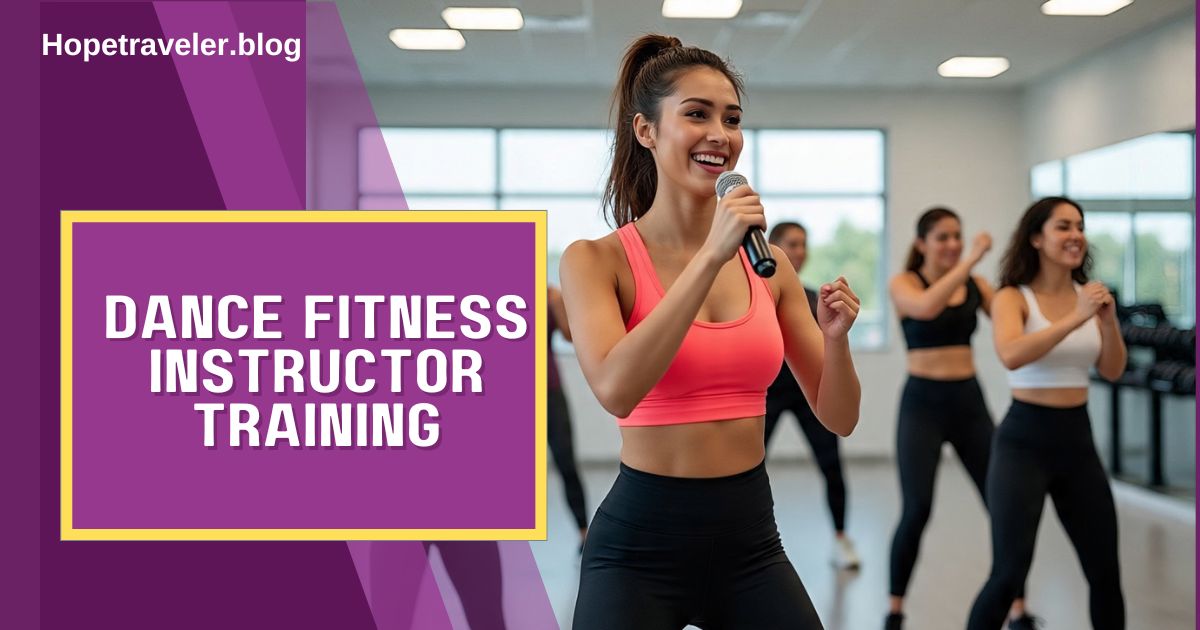Becoming a dance fitness instructor is an empowering and dynamic career choice for those passionate about dance, health, and helping others achieve their fitness goals. The demand for certified instructors continues to grow as more people embrace movement-based workouts for both physical and mental well-being. Whether you aspire to lead Zumba, aerobics, or freestyle dance workouts, structured and accredited dance fitness instructor training is essential. This article offers an in-depth guide to what the training entails, qualifications required, the types of programs available, and how to build a successful career in this field.
What Is Dance Fitness?
Dance fitness combines choreographed dance routines with aerobic exercise. Unlike traditional workouts, dance fitness classes focus on rhythm, expression, and full-body movements set to upbeat music. Programs such as Zumba, Barre, Jazzercise, and Hip-Hop fitness have popularized the genre globally. According to Wikipedia, dance as a form of physical activity dates back thousands of years and has continually evolved as both performance art and exercise.
Dance fitness workouts typically target cardiovascular endurance, coordination, muscle tone, and flexibility. Because of their engaging nature, these classes attract a wide demographic—from teenagers to seniors—and are held in gyms, studios, schools, and online platforms.
Why Dance Fitness Instructor Training Is Important
Even if you’re an experienced dancer or athlete, becoming a certified dance fitness instructor requires structured training. Here’s why:
1. Safety and Technique
Instructors must understand proper body mechanics to reduce the risk of injury. Training programs emphasize warm-up and cool-down routines, proper posture, alignment, and pacing of routines.
2. Choreography Skills
Designing effective routines that match the fitness level and goals of a class is an art. Courses offer techniques in sequencing, cueing, and music mapping.
3. Motivation and Communication
Instructors serve as motivators. Training teaches voice projection, class engagement, and inclusive language, helping create a welcoming environment for all participants.
4. Certification and Credibility
Most gyms and wellness centers require official certification. Being certified ensures employers and clients that you’re knowledgeable, insured, and capable of teaching safely.
Popular Dance Fitness Programs
Several globally recognized programs offer dance fitness instructor training. Here are some of the most popular:
Zumba®
Perhaps the most well-known, Zumba is a Latin-inspired dance fitness program combining salsa, merengue, reggaeton, and more. Zumba Basic 1 Instructor Training is a one- or two-day course that provides the foundation to teach.
Jazzercise
A blend of jazz dance, resistance training, Pilates, yoga, and kickboxing, Jazzercise requires prospective instructors to attend a 2-day training course followed by an audition.
Barre
Barre incorporates ballet-inspired movements with Pilates and strength training. Certification programs like Barre Above or Booty Barre are popular choices for fitness professionals.
Les Mills SH’BAM or BODYJAM
These programs offer high-energy, choreographed routines. Instructors complete initial training followed by regular evaluations.
Components of Dance Fitness Instructor Training
Most instructor training courses, whether in-person or online, follow a standardized structure:
1. Theoretical Knowledge
Trainees learn exercise science principles, anatomy, and physiology. This includes understanding how the body moves and reacts to different intensities.
2. Class Structure and Programming
Instruction on how to format a class: warm-up, main routine, cooldown, and stretching.
3. Cueing and Teaching Techniques
Trainees practice verbal and visual cueing. Effective cueing enhances the flow and ensures participant safety.
4. Music Selection and Timing
Understanding beats per minute (BPM), music phrasing, and how to match movements with songs.
5. Assessment and Certification
Most programs conclude with practical assessments. You may have to lead a mock class or submit a video for evaluation.
Qualifications Required
Generally, no formal academic qualifications are necessary to begin dance fitness training, though the following are beneficial:
- Background in Dance or Fitness: Prior experience in dance styles (hip-hop, Latin, ballet, etc.) or aerobic training helps.
- First Aid and CPR Certification: Some programs may require or recommend first aid training.
- Minimum Age Requirement: Most certifications require candidates to be at least 18 years old.
Accredited Training Bodies
To ensure quality education and recognized credentials, choose training from accredited organizations. Examples include:
- American Council on Exercise (ACE)
- Athletics and Fitness Association of America (AFAA)
- International Dance Exercise Association (IDEA)
- Zumba® Academy
- Barre Above
- Les Mills
Many of these offer continuing education units (CEUs), helping you stay updated with industry standards.
Career Opportunities After Certification
Once certified, you can work in various settings:
1. Fitness Centers and Gyms
Large chains such as Gold’s Gym, LA Fitness, or Planet Fitness regularly hire dance fitness instructors.
2. Dance Studios
Studios may offer dance fitness alongside technical dance classes.
3. Community Centers and Schools
Local centers often hold low-cost fitness classes and are ideal places to build community connections.
4. Online Classes
With the rise of platforms like Zoom and YouTube, instructors can build global audiences and even monetize their own fitness brands.
5. Corporate Wellness Programs
Many corporations invest in fitness classes for employees to promote well-being.
Tips for Success as a Dance Fitness Instructor
Build a Personal Brand
Having a unique teaching style and a strong online presence can set you apart. Use platforms like Instagram or TikTok to share snippets of your routines.
Keep Learning
The fitness industry is ever-evolving. Stay updated with new dance trends and attend workshops.
Get Insured
Professional liability insurance is vital to protect yourself legally while teaching.
Stay Fit and Energetic
Practice self-care to maintain the stamina and enthusiasm required for leading high-energy sessions.
Conclusion
Dance fitness instructor training is more than learning choreography—it’s about inspiring people to embrace movement and health. With numerous certification options, passionate individuals can turn their love of dance into a fulfilling and lucrative career. As the popularity of dance fitness continues to grow, so does the demand for skilled and certified instructors who can make workouts fun, safe, and results-driven.
For more information on the broader concept of dance, you can explore its historical and cultural significance on Wikipedia’s dance page.




